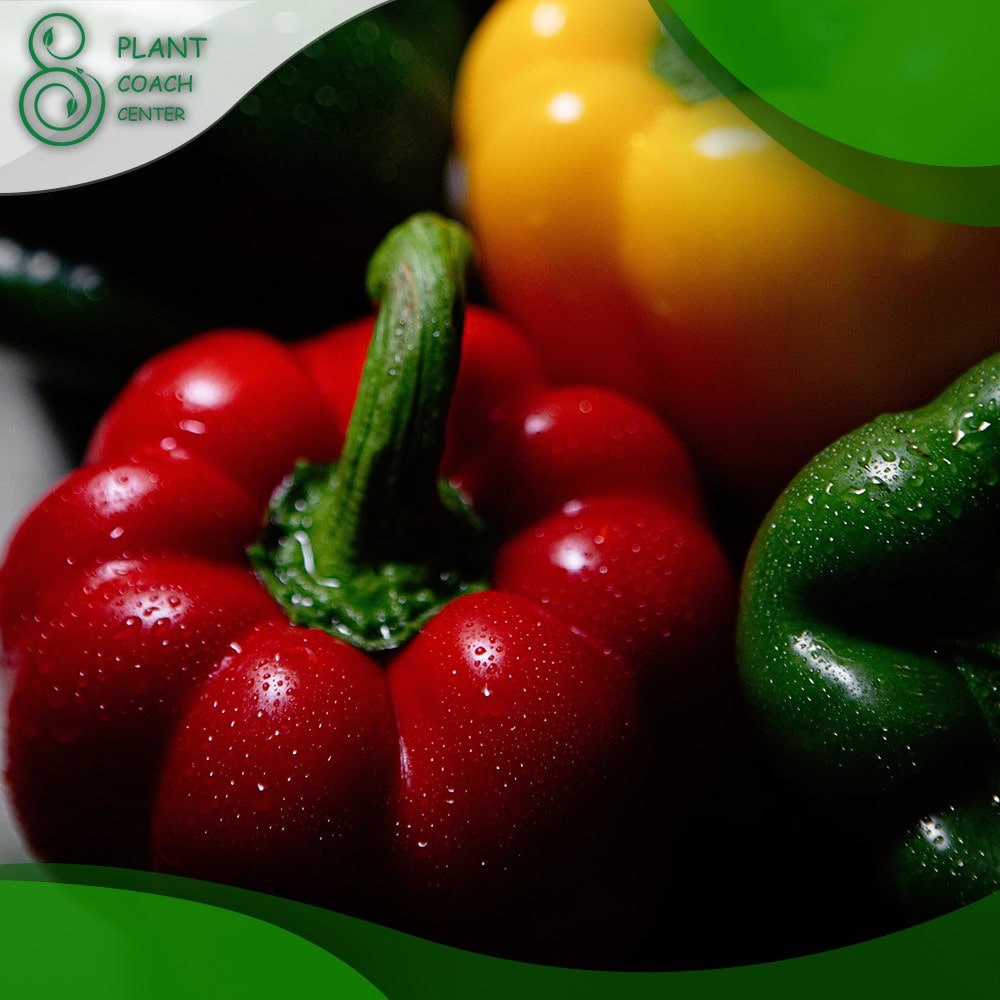When to Grow Bell Peppers?
Welcome to the vibrant world of bell pepper cultivation, where hues of red, green, yellow, and even purple paint a tapestry of taste and nutrition. If you’re a gardening enthusiast or a culinary adventurer, growing bell peppers is an experience that promises the satisfaction of nurturing life from seed to fruit and the joy of adding a fresh, homegrown twist to your dishes.
Whether you’re dreaming of a red pepper’s fiery kick or a green one’s mellow sweetness, understanding the art of timing is essential. The journey from tiny seeds to robust plants laden with colorful peppers is influenced by various factors, from seasonal rhythms and weather whims to indoor care and outdoor finesse.
Join us as we embark on a pepper-packed expedition through time, unraveling the mysteries of when to sow, when to reap, and how to ensure your bell peppers thrive in their quest to bring both flavor and flair to your garden and kitchen alike.
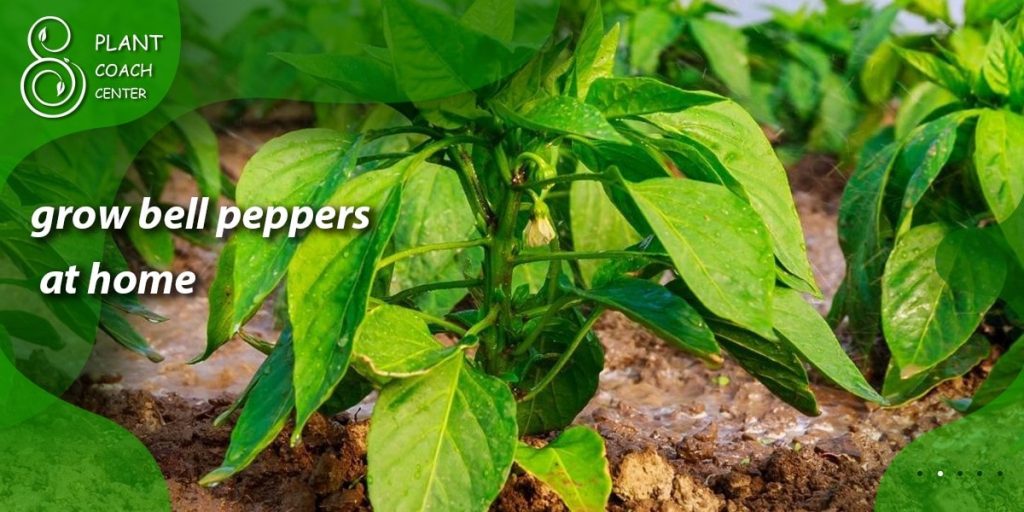
Pepper Primer: Varieties and Their Timelines
When it comes to bell peppers, diversity reigns supreme. These vibrant veggies come in various shapes, sizes, and flavors, making them a versatile addition to any garden or kitchen. The first step in mastering the art of growing bell peppers is understanding different varieties’ unique timelines and requirements.
Sweet Sensations
Sweet bell peppers encompass a spectrum of colors, from green to red, yellow, orange, and even purple. These varieties generally take longer to mature, often requiring around 60 to 85 days from transplanting to the first harvest. The wait is undoubtedly worth it, as the flavors intensify as the peppers change color, transitioning from crisp and slightly bitter to deliciously sweet.
Spice It Up
Hot bell peppers offer a thrilling alternative for those craving a bit of heat. Jalapeños, serranos, and habaneros fall into this category, each boasting a distinctive spice level. These peppers have a shorter growing season, typically maturing within 50 to 80 days after transplanting. The key to cultivating fiery flavor is timing and providing adequate warmth and sunlight.
Mini Marvels
Miniature bell peppers are a charming addition to the pepper family. These petite delights are often just as sweet as their full-sized counterparts, with the bonus of being perfect for snacking and garnishing. Mini bell peppers generally require about 60 to 75 days to mature, making them a relatively quick option for those eager to enjoy their harvest sooner.
Novelty Delights
Beyond the usual suspects, consider exploring novelty bell pepper varieties in unconventional shapes and sizes. From bell-shaped pimientos to pointy “snacking” peppers, these options can add a playful twist to your garden. Timelines for novelty peppers can vary widely, so it’s essential to consult specific seed packets or resources for accurate information.
Seasonal Strategy: Choosing the Perfect Time to Plant
Cultivating bell peppers begins with a keen understanding of the seasons and their influence on plant growth. The right timing can make all the difference between a bountiful harvest and disappointment. Let’s delve into the seasonal strategy for planting bell peppers, helping you choose the optimal time to start your pepper-growing adventure.
Spring Splendor
As the frost retreats and the temperatures gradually rise, spring emerges as an ideal time to kickstart your bell pepper journey. However, it’s important to note that peppers are warm-season plants that thrive in temperatures ranging from 70°F to 85°F (21°C to 29°C). Therefore, if you live in a region with a chilly spring, starting your peppers indoors allows you to provide the warmth they need while avoiding the risk of frost damage.
Begin sowing seeds indoors 8 to 10 weeks before your area’s last expected frost date. This gives your pepper plants a head start, and by the time the weather becomes suitable for transplanting, they’ll be solid and ready to flourish outdoors.
Summer Strategy
If you live in a climate with a longer growing season and warm summer temperatures, you can directly sow bell pepper seeds outdoors once the threat of frost has passed and the soil has warmed up. Remember that peppers take time to mature, often needing several months before being ready for harvest. By planting in the early summer, you can take advantage of the extended daylight hours and warmth essential for robust growth and fruitful yields.
Fall Flexibility
In regions where the growing season extends into the fall, consider planting bell peppers in mid-summer. This allows the plants to establish themselves and produce fruit before the cooler autumn temperatures. Keep a watchful eye on the weather, as an unexpected frost can damage your peppers even after summer. Protective measures like frost cloths or row covers can help safeguard your plants during chilly nights.
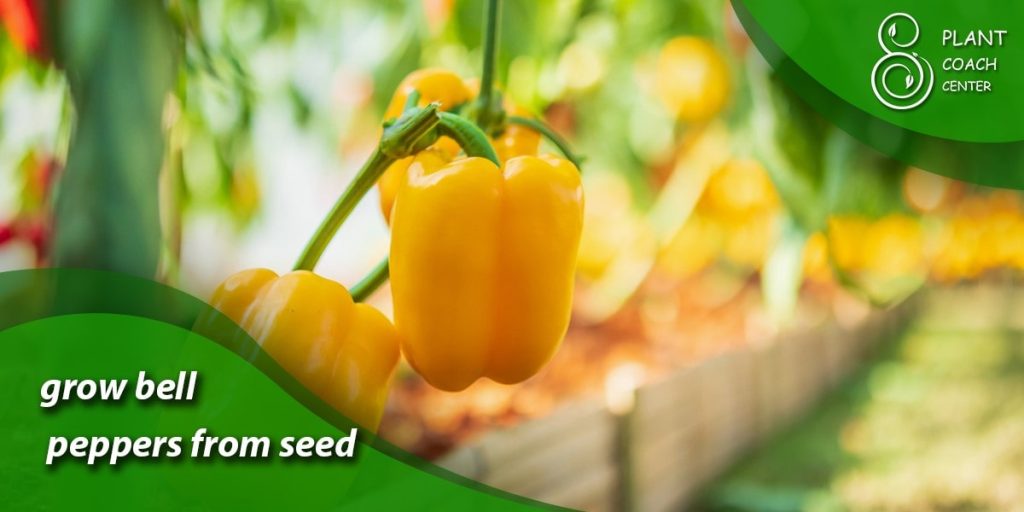
Weather Watch: Navigating Temperature Extremes
Bell peppers are sensitive souls when it comes to temperature. From germination to fruiting, the proper temperature range can make or break your pepper-growing endeavor. Understanding how to navigate temperature extremes is essential to ensure your bell peppers thrive throughout their lifecycle.
Chilly Challenges
While bell peppers are warm-loving plants, they can still be susceptible to chilly temperatures, especially during their early stages. Planting peppers outdoors before the last frost date in your area can stunt their growth or even kill them.
To safeguard your plants from unexpected cold snaps, consider using frost cloths, row covers, or improvised greenhouses using plastic sheets or containers. You can also start your seeds indoors to give them a head start in a controlled environment until the weather is consistently warm enough.
Heat and Vigilance
On the flip side, high temperatures can also pose challenges. When the mercury climbs above 90°F (32°C), bell pepper flowers can drop before setting fruit due to heat stress. Providing ample shade during peak sun hours and ensuring proper irrigation are crucial during heatwaves. Mulching around your plants can help regulate soil temperature and retain moisture, reducing plant stress.
The Ideal Range
For optimal growth, aim to maintain temperatures between 70°F and 85°F (21°C to 29°C) during the day and around 60°F to 70°F (15°C to 21°C) at night. Peppers thrive when they have warm days and slightly cooler nights. In regions with unpredictable weather, consider planting bell peppers in raised beds or containers that can be moved indoors.
Seasonal Adjustments
As the seasons transition, pay attention to temperature fluctuations and make necessary adjustments. Keep an eye on weather forecasts and be prepared to provide protection during sudden cold spells or excessive heatwaves. Regularly monitoring the weather and your plants’ responses will help you fine-tune your care routine for the best results.
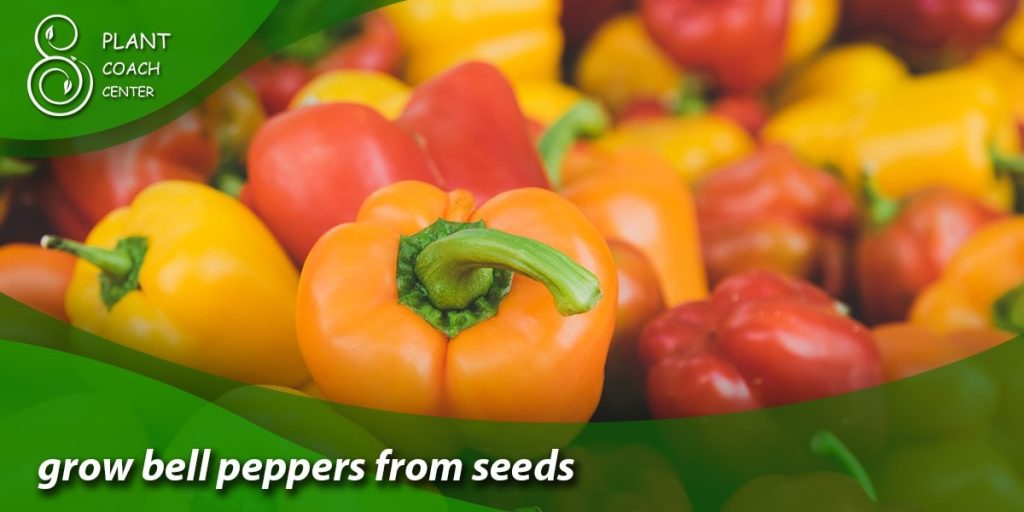
Indoor vs. Outdoor: Weighing the Growing Options
When it comes to growing bell peppers, you’re faced with a delightful dilemma: Should you nurture them indoors or let them thrive in the great outdoors? Each option offers its own advantages and considerations, allowing you to tailor your approach based on your resources, climate, and gardening goals.
Indoor Intricacies
Starting bell pepper plants indoors offers several benefits, mainly if you live in an area with a shorter growing season or unpredictable weather. Indoor cultivation allows you to control the environment, ensuring consistent temperatures, light, and moisture levels.
This is especially important during the germination and early seedling stages when the plants are most vulnerable. Moreover, by giving your peppers a head start indoors, you can extend the harvest season, as they’ll be more established when transplanted outside.
Outdoor Opportunities
Growing bell peppers outdoors in their natural habitat can yield satisfying results. Pepper plants thrive under the open sky, receiving ample sunlight and fresh air. If you have a sunny garden with well-draining soil, peppers can flourish without artificial lighting or indoor space. Outdoor cultivation also allows natural pollinators like bees to do their work, increasing the chances of successful fruiting.
Container Considerations
An intriguing middle ground exists in the form of container gardening. This method allows you to enjoy the benefits of both indoor and outdoor cultivation. You can start your bell pepper seeds indoors and transfer them to outside containers once the weather is favorable. Container gardening is beneficial if you have limited garden space or poor-quality soil. Remember that container pepper plants may require more frequent watering due to faster soil drying.
Microclimate Management
Your local climate and microclimate play a pivotal role in the indoor-outdoor decision. Starting peppers indoors can give them a jumpstart on growth if you live in a colder region. On the other hand, outdoor cultivation may be the most straightforward option if you reside in a warmer climate. Pay attention to the temperature fluctuations and sunlight patterns specific to your location.
Seed to Soil: Germination and Seedling Care
Embarking on the journey of growing bell peppers begins with a tiny seed and a promise of lush foliage and vibrant fruits. Proper germination and seedling care lay the foundation for healthy, resilient plants that delight you with their bountiful harvest. Let’s delve into the essential steps to guide your bell pepper seeds from humble beginnings to robust seedlings.
Choosing the Right Seeds
Selecting high-quality bell pepper seeds is the first step toward a successful harvest. Opt for seeds from reputable suppliers, and consider factors such as the variety, flavor profile, and growth habits you desire. Ensure the seeds are fresh, as older seeds may have lower germination rates.
Starting the Germination Process
Kickstart germination by sowing your bell pepper seeds in a sterile seed-starting mix. Plant the seeds about ¼ inch deep and lightly cover them with the soil. Keep the soil consistently moist, but avoid overwatering to prevent seed rot. Warmth is crucial for germination; placing the seed tray or pots in a warm location or using a seedling heat mat can expedite the process.
Nurturing Emerging Seedlings
As the seedlings emerge, provide ample light to prevent stretching and promote vigorous growth. A south-facing windowsill or artificial grow lights can provide the necessary light intensity if growing indoors. As the seedlings develop their first set of true leaves, it’s time to transplant them into individual pots with well-draining potting soil. Handle the delicate seedlings with care to avoid damaging the roots.
Temperature and Airflow
Maintain a consistent temperature range between 70°F and 85°F (21°C to 29°C) to ensure optimal growth. Proper airflow is also crucial to prevent diseases and mold. Gently brushing your hand over the seedlings a few times a day mimics the movement caused by wind and strengthens the stems.
Transplanting Outdoors
When your seedlings have grown a few sets of leaves and the outdoor temperatures are consistently warm, it’s time to transplant them into your garden or containers. Harden off the seedlings by gradually exposing them to outdoor conditions over a period of 7 to 10 days. This helps them acclimate to sunlight, wind, and temperature changes.
Final Words of Care
Watch for signs of nutrient deficiencies, pests, or diseases throughout the germination and seedling stages. Regularly water your seedlings, ensuring that the soil remains consistently moist but not waterlogged. A balanced liquid fertilizer at half-strength can provide the nutrients for healthy growth.
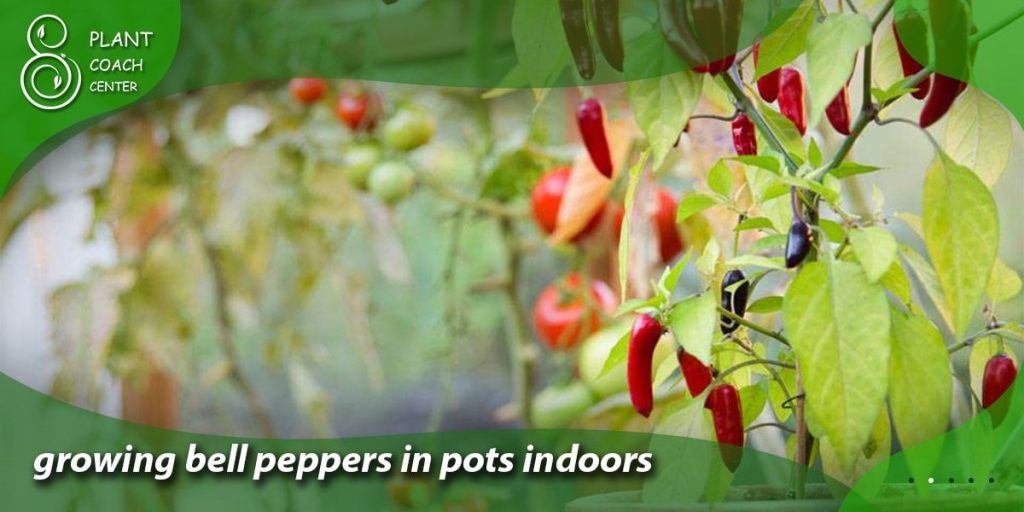
Transplant Triumph: Moving Seedlings to the Garden
The moment has arrived to watch your bell pepper seedlings leave their cozy indoor haven and venture into the outdoor world. Transplanting seedlings can be exciting and nerve-wracking. Still, with a few key considerations and careful steps, you can ensure a successful transition that sets the stage for a thriving pepper harvest.
Choosing the Right Timing
Timing is everything when it comes to transplanting seedlings. Wait until all threats of frost have passed and the outdoor temperatures are consistently within the optimal range for bell peppers (70°F to 85°F or 21°C to 29°C). This might coincide with the arrival of warmer weather in the spring or early summer, depending on your region.
Preparing the Soil
Choose a sunny, well-draining spot for your bell pepper plants in your garden. Amend the soil with compost to improve its structure and fertility. Bell peppers prefer slightly acidic to neutral soil (pH 6.0 to 7.0). If you’re growing in containers, ensure they have proper drainage holes and fill them with a high-quality potting mix.
Transplanting Technique
On the day of transplanting, water your seedlings thoroughly to ensure their roots are well-hydrated. Gently remove the seedlings from their pots, carefully not damaging their delicate roots. Dig holes in the garden or containers slightly larger than the root balls of the seedlings. Place each seedling in its hole, ensuring it’s at the same depth it was growing indoors. Backfill the hole with soil, gently pressing it around the seedling’s base.
Spacing and Support
Bell pepper plants can grow quite large, so proper spacing is essential to prevent overcrowding. Leave about 18 to 24 inches (45 to 60 cm) between plants in rows and 24 to 36 inches (60 to 90 cm) between rows. Providing support, such as stakes or cages, can help keep the plants upright as they develop heavy fruits.
Watering and Care
After transplanting, water the seedlings thoroughly to help them establish their roots in their new environment. Keep the soil consistently moist, but avoid overwatering to prevent waterlogged roots. As the seedlings adapt to their outdoor home, monitor them closely for any signs of stress, such as wilting or yellowing leaves. According to the package instructions, a balanced fertilizer can provide the necessary nutrients for robust growth.
Guarding Against Setbacks
Even with the best care, seedlings may experience a period of adjustment after transplanting. Protect them from strong winds and intense sun during their first few days outdoors. Consider using protective coverings like cloths or row covers to prevent cold damage if you anticipate cool nights.
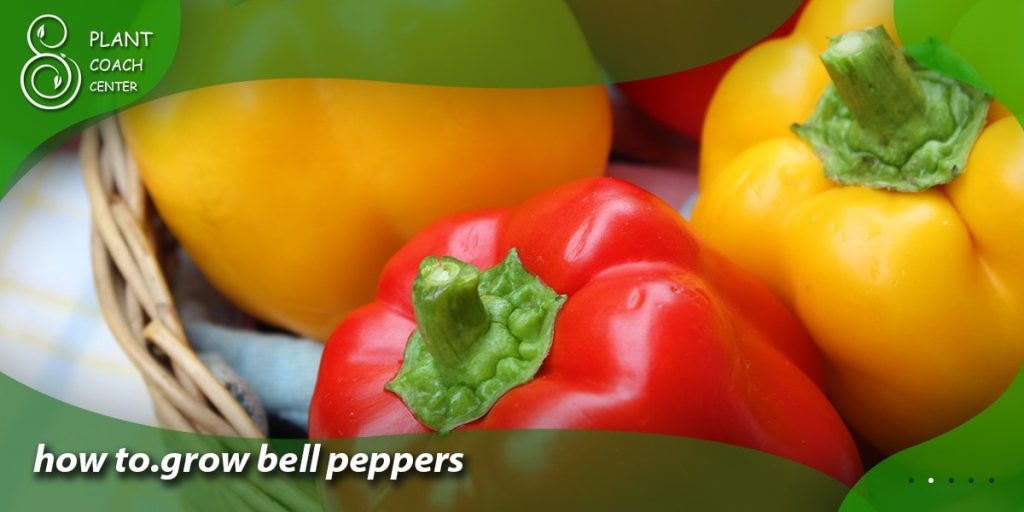
Maximizing Yield: Maintenance and Harvesting Hacks
Congratulations, you’ve successfully guided your bell pepper plants from seeds to vibrant foliage, and now it’s time to reap the rewards of your labor. However, the journey isn’t over just yet. Proper maintenance and harvesting techniques are essential to ensure a bountiful harvest of delicious peppers. Let’s explore strategies to maximize your bell pepper yield and savor the fruits of your hard work.
Water Wisely
Consistent and even watering is crucial for healthy pepper plants. Aim to keep the soil consistently moist but not waterlogged. Drip irrigation or soaker hoses are great options for delivering water directly to the root zone while minimizing the risk of fungal diseases. Mulching around the plants helps retain soil moisture and regulates temperature.
Fertilization Fundamentals
Providing your bell pepper plants with the proper nutrients at the right time can significantly impact their productivity. When transplanting, begin with a balanced fertilizer and follow up with additional applications according to the package instructions. Nitrogen is essential for leafy growth, while phosphorus and potassium promote flowering and fruiting. Too much nitrogen can result in lush foliage but fewer peppers.
Support and Pruning
As your bell pepper plants grow and produce fruits, they might need additional support to prevent branches from breaking under the weight of the peppers. Staking or caging the plants can keep them upright and allow better air circulation, reducing the risk of disease. Additionally, consider pruning off lower leaves that might touch the ground, as they can attract pests and diseases.
Pest Patrol
Watch for common pests that target bell pepper plants, such as aphids, pepper weevils, and hornworms. Regularly inspect the leaves, stems, and fruits for any signs of infestation. Introducing beneficial insects like ladybugs or using natural pest control methods can help keep unwanted visitors at bay.
Harvesting Techniques
Knowing when and how to harvest your bell peppers is vital to ensure they reach their peak flavor and quality. Most bell peppers are ready to be picked when they reach their full size and have a glossy, vibrant appearance. Use clean and sharp scissors or pruning shears to cut the peppers from the plant, leaving a short stem attached. Avoid yanking or pulling, as this can damage the plant.
Ripening Tactics
If you want green bell peppers to turn red, orange, or yellow, you can leave them on the plant to ripen further. Peppers will continue to change color as they mature. Alternatively, pick green peppers and place them in a paper bag with a ripe banana or apple. The ethylene gas produced by the fruit will help speed up the ripening process.
Conclusion
In the colorful world of bell pepper cultivation, timing is everything – from the first whisper of germination to the triumphant harvest of vibrant fruits. Nurturing these plants from seeds to robust harvests requires a delicate dance with nature, a symphony of care that ensures optimal growth and flavor. Whether you cultivate them indoors, embrace the great outdoors, or find a balance in container gardening, the journey is one of patience, learning, and eventual abundance.
Remember, the expertise lies not only in the planting but also in the nurturing, the vigilant weather-watching, and the meticulous care given at every stage. So, whether you’re a seasoned gardener or just dipping your toes into the world of horticulture, the bell pepper journey is a rewarding one that promises color, taste and a touch of nature’s magic. For more tips, advice, and inspiration on all things green, visit PlantCouchCenter.com – your companion in the captivating world of plant cultivation.
When should I start bell pepper seeds indoors?
8-10 weeks before the last frost.
What's the best temperature range for bell peppers?
70°F to 85°F (21°C to 29°C).
How do I prevent bell pepper plants from toppling?
Use stakes or cages for support.


